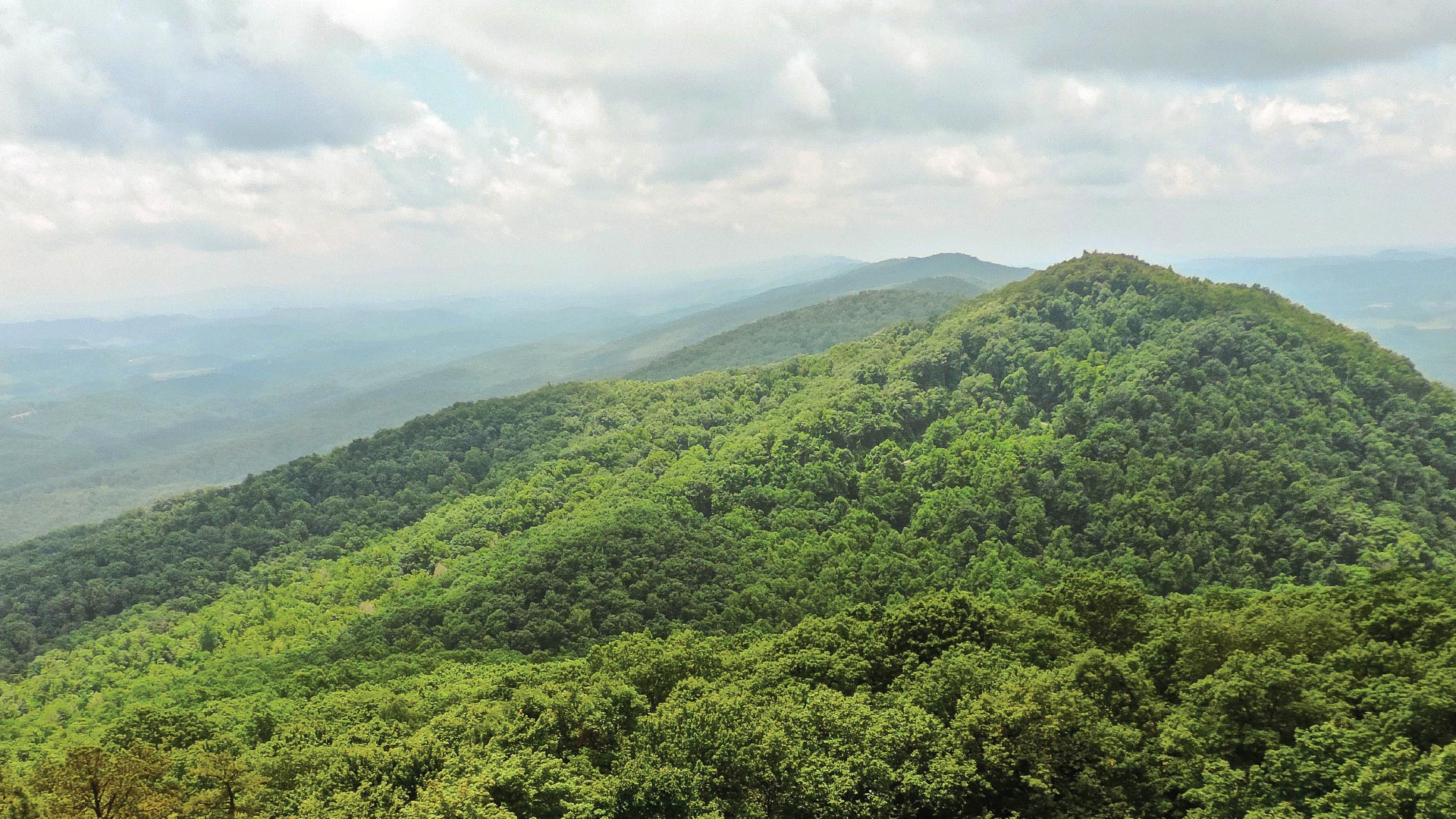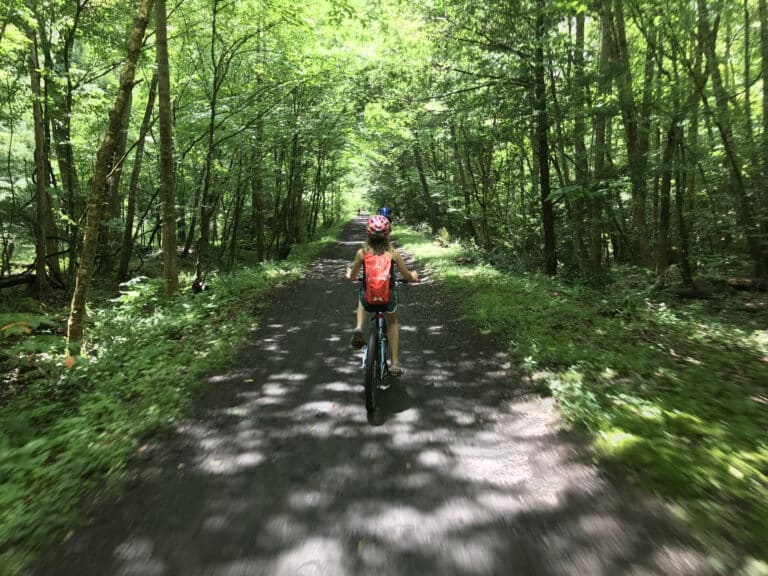A largely undiscovered oasis in the coalfields is helping communities rebuild.
My hiking partner and I have been walking the Kentucky-Virginia border for an hour across the crest of Pine Mountain, tiptoeing over a knife-edge of sandstone to a rockshelter below the summit. The outcrop is massive, with a hollowed-out area large enough to fit a three-story house. It’s the kind of place a person might choose to ride out the apocalypse.
As the cliffline shades us into darkness under a June sun, my companion sums up the experience with a single word: “Whoa.”
Pine Mountain has that way of sneaking up on people. It’s far from the East’s tallest point, and it hosts no federally-designated wilderness areas. It’s not even your typical mountain: the 125-mile ridgeline, running from Jellico, Tenn. northeastward to Breaks Interstate Park, is technically the uppermost lip of a tilted mass of rock that was broken and uplifted nearly 300 million years ago.
But spend some time on Pine Mountain, and any obscurity fades away quickly. “It feels like it was almost designed in a laboratory,” says Phil Meeks, a Virginia Cooperative Extension agent and avid hiker. “Just when you get to the point where you think you’re going to have a boring walk, you come across something new that catches your attention.”
Pine Mountain’s secrets have been steadily gaining notoriety, from long-distance hiking options to popular ultramarathons traversing its slopes. But as that outdoor recreation landscape takes shape, it’s also running up against challenges indicative of the southern Appalachians’ changing economic and cultural climate. In fact, the mountain’s role in creating rifts among users while bridging deep economic divides may hold valuable lessons for an entire region in flux.
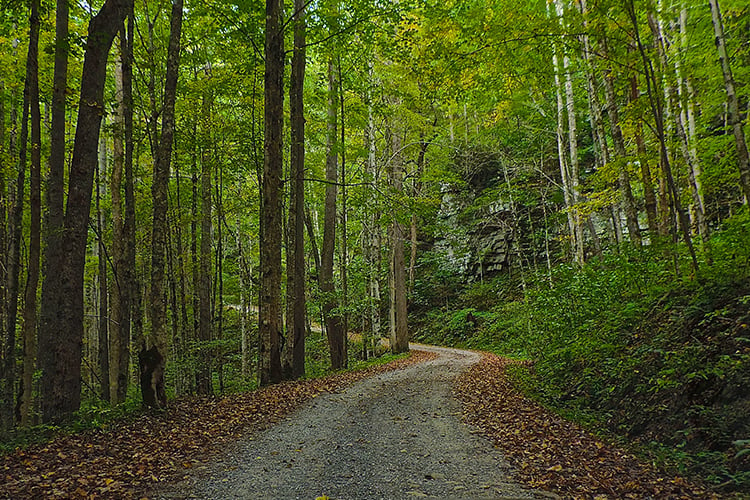
Tracing Historic Trails
It’s easy to find those lessons on the Pine Mountain State Scenic Trail, a linear component of Kentucky’s state park system. James Stapleton, president of the Pine Mountain Trail Conference, says that the 40-mile footpath didn’t just materialize in a marketing meeting. “We’ve constructed trail,” Stapleton says, “but basically we used what once were prehistoric animal trails that were adopted by Native Americans and by European settlers.”
Today, those routes trace a continuous pathway from Elkhorn City, Ky. to U.S. 119 above the town of Whitesburg, passing sandstone arches, high-elevation wetlands, and overlooks galore. The Conference’s ultimate goal is to extend the trail southwest to Cumberland Gap National Historical Park, although getting there now requires a lengthy roadwalk from the trail’s southern terminus. Stapleton says work is ongoing to get some of that route off of pavement and into the woods.
The route has also caught the eye of the Great Eastern Trail, a proposed 1,600-mile pathway leading from Alabama to New York. Pine Mountain’s footpath sits as a sort of blazed island in the midst of the Appalachian coalfields—what Stapleton calls a “fingernail” of intact forest—waiting for a connection to be built north to Matewan, W.Va.
Making those connections means raising the trail’s profile, and that’s just what the route has been seeing in recent years. Meeks cites a growing number of out-of-state hikers as evidence of increased use, while Breaks Interstate Park—located across the Russell Fork from Elkhorn City—has recently added rock climbing options and a zipline attraction. “There’s a growing interest in making this area an ecotourism destination,” he says.
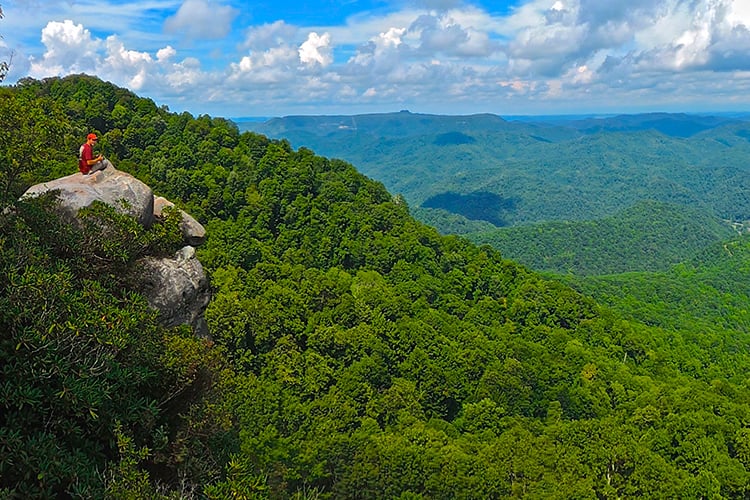
A “Green Strip”
For Hugh Archer, that transformation means more than just a walking path. A former executive director of the Kentucky Natural Lands Trust, Archer has worked for years with the Trust to protect the mountain, which serves as a biological oasis in an area that has otherwise experienced intense disturbance. “It’s this green strip up through the eastern coalfields,” he says.
Part of what’s saved Pine Mountain is that its rugged ridgeline lacks mineable coal, the result of a geological quirk that—along with its steep terrain—has kept most of the mountain intact. Kentucky’s largest old-growth forest is found on the mountain, along with nearly 100 rare plant and animal species. Despite all of its natural wealth, though, the majority of Pine Mountain has historically been privately owned and unprotected.
Archer and others have been working to change that. To date, Archer estimates that roughly 50 percent of the top of the mountain has been bought or protected. And in the past few years, he says that the effort has been “on a roll,” with 7,000 new acres purchased.
Archer also says that protecting the mountain and enhancing outdoor recreation aren’t separate endeavors. As the region continues to suffer from the coal industry’s decline, new public lands could help route the Great Eastern Trail, providing a piece of the regional economic puzzle. “There’s no silver bullet for the mining towns, but there are silver BBs,” he says. “And we view this as one of those BBs to help communities recover.”
However, that search for economic options is also where Pine Mountain’s user conflicts begin. Communities around the mountain have recently proposed building a sprawling federal prison complex and a casino below the mountain’s summit. Those types of developments could interrupt the protected corridor that Archer and colleagues have been building. And ATV use has run into conflict with hikers along the mountain’s slopes.
“For generations, there have been people who have used the mountain in certain way,” Meeks says. “It’s been an ATV trail for folks for a long time.” Those conflicts reached a peak in 2016, when a bill introduced in the Kentucky legislature would have opened up much of the mountain’s trails to ATVs. That bill was eventually withdrawn following public outcry, but it’s unlikely that user conflicts will stop anytime soon.
Where Pine Mountain goes from here is unclear, but it’s a region worth watching as communities across the Blue Ridge continue to adjust to rapidly changing economies. Friction between stakeholders is becoming more commonplace beyond Pine Mountain, from conflicts between timber management and hikers in North Carolina’s Big Ivy to pipeline corridors threatening the Appalachian Trail. No single area seems to have hit upon a clear solution for those issues, and the successes and failures of places like Pine Mountain may show a way forward.
Along the Kentucky-Virginia border, that path can be difficult to travel. “It’s sort of like taking a step forward and taking a step back,” Meeks says, but despite those challenges, he, Archer, and Stapleton are all optimistic about the mountain’s future.
For Archer, there’s a simple reason why. “It’s some of the best natural area left in the country,” he says. And for everyone with their sights set on the mountain, that alone seems motivation enough.
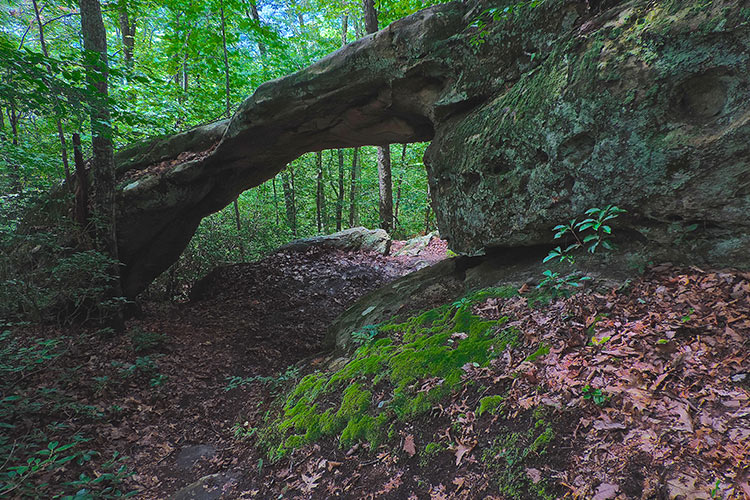
Experience Pine Mountain
Pine Mountain’s highest point can be found at Birch Knob, a 3,144-foot summit with a unique observation platform offering 360-degree views into West Virginia and North Carolina. The knob also doubles as a parking area for the Pine Mountain Trail. Access the tower through Clintwood, Va.
Blanton Forest Preserve, located outside of Harlan, Ky., offers a chance to hike through old-growth forests and snag long-range views atop the preserve’s massive Knobby Rock.
Breaks Interstate Park sits astride the Kentucky-Virginia border on Pine Mountain’s northeast end. A lodge, cabins, and lake provide less-rustic options, while hiking trails plunge into the rugged Russell Fork Gorge. Recently-opened climbing routes provide access to crags reminiscent of the New River Gorge.
